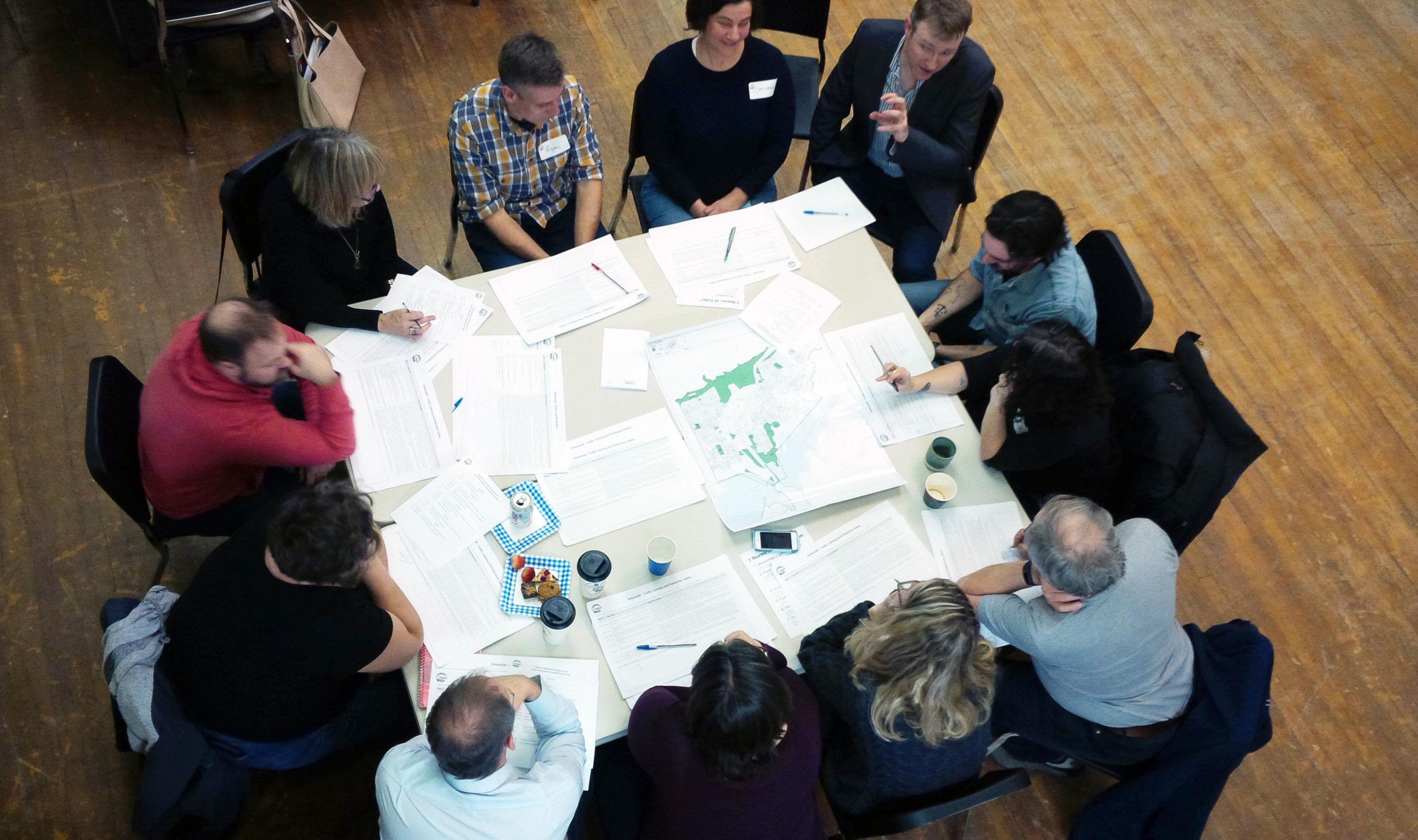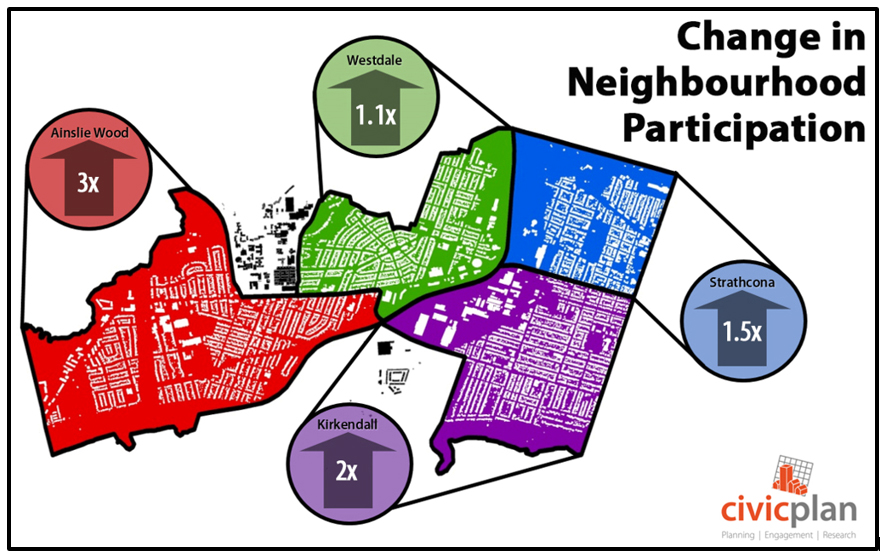How PB Analytics Helps Build Neighbourhood Engagement
Since 2012, residents of Ward 1 in Hamilton, Canada have worked together to determine how approximately $7.5 million (CAD) would be spent on local infrastructure projects. The ward’s participatory budgeting (PB) process, “forWard one,” has grown in popularity year after year. In its first year (2012), just over 400 residents participated. The 2016 process recorded the highest levels of participation yet with over 2,100 residents participating. There are many reasons for the success of this process, one of which is how data is used to focus improvements in participation.
Civicplan has built into the design of the process PB analytics, which provides detailed tracking of metrics that help assess whether and how forWard one is meeting its goals. Neighbourhood equity has always been one of these central pillars, given that the ward encompasses a diversity of communities with different challenges and pressures.
Two key metrics that Civicplan measures year over year are designed to help determine progress toward this goal. The first metric measures the distribution of voting by neighbourhood as compared to the total number of votes for the Ward. The second metric illustrates the changes in actual participation within each neighbourhood year over year.
The data captured under these metrics provides the Ward Councillor, the members of PBAC (the PB Advisory Committee, comprised of community members) and the community at large with insights into where to improve the process to approach greater neighborhood equity. This was the case in the 2016 process in the neighbourhood of Ainslie Wood.
This neighbourhood sits opposite the major local post-secondary institution, McMaster University, and as such has many related pressures including a large student population, absentee landlords and high turnover in residents. All of this contributes to challenges in participation. In 2014, Ainslie Wood represented 15 percent of the vote distribution, one of two neighbourhoods with the lowest rates of participation. In order to improve this, the forWard one team took specific steps to improve participation from Ainslie Wood in the following ways.
- New members from Ainslie Wood were welcomed onto the PBAC, including long-time residents with strong connections to neighbourhood institutions.
- These individuals identified and encouraged new community champions to generate and submit ideas for community focused projects.
- The community champions engaged in promoting their projects, and the forWard one process, to a more diverse resident base to improve voting.
The results of taking a targeted approach to improve Ainslie Wood’s involvement in forWard one paid off. While the voting participation for all neighbourhoods increased in 2016, the growth in the Ainslie Wood neighbourhood was the most significant, with voter participation increasing by three times previous years, from 186 in 2014 to 566 in 2016. More pointedly though, this resulted in the success of four significant Ainslie Wood projects in the final funded projects list. These included dedicating additional funds to create a recreation centre and community hub at a former elementary school site, funds to develop complete streets throughout the neighbourhood, as well as funding for improving two park areas, new facilities for one and naturalizing the other space.
Hamilton’s Ward 1 participatory budgeting process has been underway for a number of years now, and offers a number of lessons about engaging residents in municipal decision making. To achieve the goals of the process, including neighbourhood equity, forWard one needs to be flexible and adaptable in targeting concrete improvements annually. Civicplan’s PB analytics are a valuable tool employed in improving neighbourhood participation year over year. The success of improved participation in the Ainslie Wood neighbourhood in 2016 demonstrates the importance of data to inform targeted change, which may also result in increasing the reach of participatory budgeting to more diverse communities in the ward, leading to better investment for the whole of Ward 1.
An original version of this article was published on Public Agenda.


